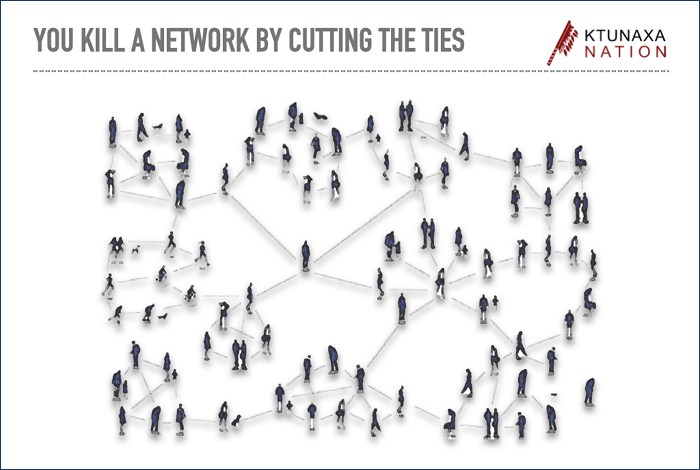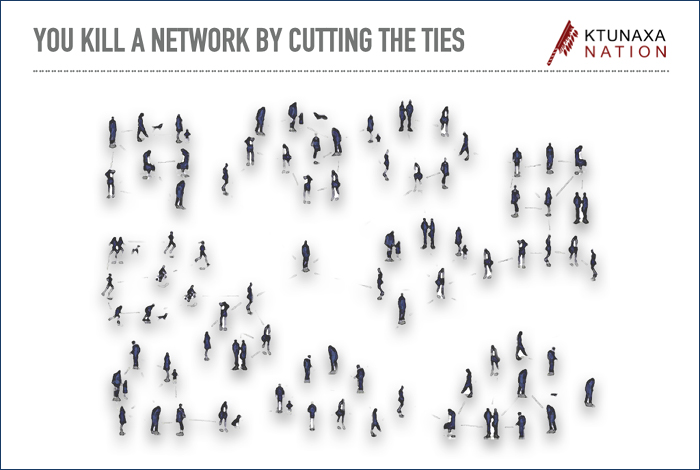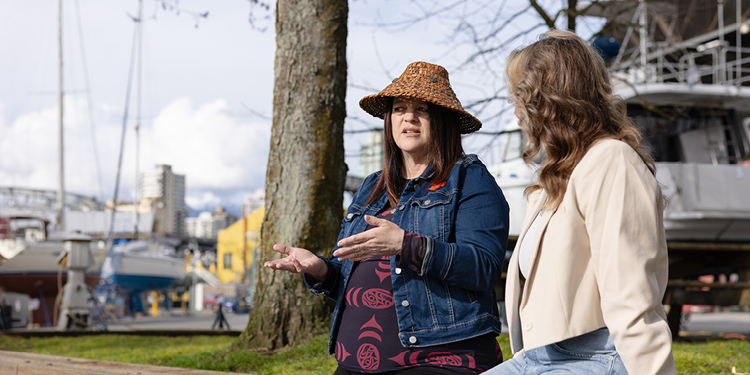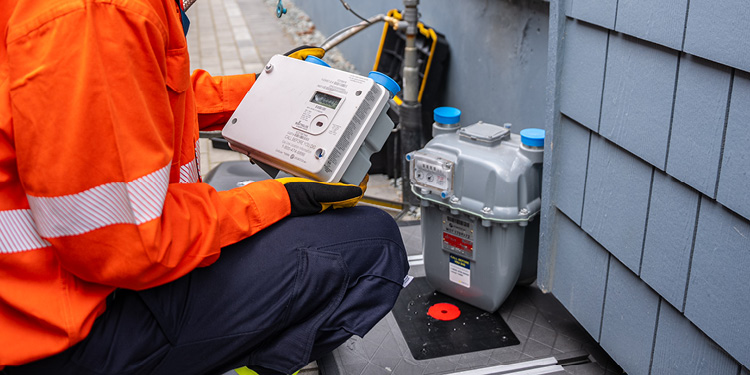How social networks help build healthy communities
March 23, 2022
Turns out a powerful place to change hearts and minds is from two degrees of separation.
According to Dr. Christopher Horsethief, member of the Ktunaxa Nation and university professor, the greatest amount of change comes from people who are not one, but two links away in a social network. That’s why this passionate educator, social network analyst and organizational theorist, speaks to organizations like FortisBC about the history of his community, the impact of residential schools and colonialism and the important work taking place there to reconnect members with their language, community and culture.
Quite simply, people from outside a community are in the best position to influence others.
The tremendous power of reviving social networks
“When it comes to issues of Reconciliation, I think it's important for everyone to work together because otherwise it becomes our communities’ responsibility and it should never be the responsibility of the people being apologized to,” he explains. “People from outside our community are in the best position to help. They can open these conversations and hold space for voices that people won't listen to. And they can amplify these ideas that most people will never hear.”
Dr. Horsethief recently presented to FortisBC’s Indigenous Employee Circle, a grassroots program offering all employees an opportunity to come together in an environment that encourages genuine conversations and fosters inclusion, connectivity and sharing.
He explained how social networks like this are critical for both knowledge sharing and problem solving; however, colonialism and multiple generations of residential schools systemically broke down these networks in First Nation communities. Now there is work underway to repair those links.
“If you want to break that community down, you start cutting the ties between them. For example, residential schools cut the tie between parent and child. After four generations of kids being taken out of the equation, all those skills like hunting, communicating, solving problems, all start to go away.”
Connection leads to learning and resiliency
In contrast, the ability to transfer knowledge between three to four links within a network is an indicator of a healthy community. Given the critical importance of social networks, he’s involved with the focused efforts within his community to rebuild these networks by reconnecting members to their history, language, culture and each other. This work is helping to build resiliency that he’s observing firsthand in his community and demonstrating empirically as part of his academic research.
In a powerful example, he explains how introducing youth to traditional canoe building also teaches them who they can go to for knowledge and support within their community, and how to apply both old and new tools to problem solve. In this way, youth come to better understand their own unique purpose and the value of others in their network. These connections become a source of support and a tool for problem solving that they carry within themselves.
“Resilience is the process of finding things that are worth saving and bringing them back.”

Dr. Horsethief explains that from a social network perspective, his community, like any other human problem-solving community, arranges themselves into clusters so that information can move efficiently and effectively, not randomly.

In contrast, when the ties between individuals are severed, it makes everyone a ‘problem-solving island,’ so that everything has to be figured out individually. You can’t ask “Where’s the song to help me with this? Where’s the place name that tells me what root grows here? What are the parts of our Oral History that allow us to understand who we are and what our tools are?”
Making the connection at FortisBC
For Tamara, information services project manager and participant in the Indigenous Employee Circle, Dr. Horsethief’s message of the value of connection, listening and resilience was very impactful.
Tamara identifies as Indigenous and was raised within a non-Indigenous community. Taking part in the Indigenous Employee Circle is one of the ways she’s learning more about her heritage, sharing her experiences and making connections with other industry professionals who have similar backgrounds.
She was deeply moved by his presentation.
“Hearing from him and seeing the historical pictures—some of them are haunting, like the priests standing with all the women and children all sitting. It’s heartbreaking to think about what they were going through. It was emotional for me, seeing how people were treated,” said Tamara.
One of the examples that resonated with her most is how Ktunaxa members come together to solve problems within their community.
“That resiliency and finding new ways goes to show the amazing power that they have within themselves to build their communities again and make sure they are taking back the power to make decisions that affect their community,” said Tamara.
“I feel like I could apply this to my life to do better. In Western culture, it’s so often the loudest person who is heard, but in their community circle, everyone has a voice, no one is wrong. And this was just one of many great examples he shared from his community that we could all use to approach conversations better.”
The opportunity to learn and grow from presenters like Dr. Horsethief and build connections with others is the intent of FortisBC’s Indigenous Employee Circle. Launched in 2021, and open to both Indigenous and non-Indigenous employees, it’s now grown to more than 70 members from a variety of departments.
It’s through initiatives like this that FortisBC is working to support Reconciliation, creating a more inclusive environment for staff and building a healthy culture for knowledge sharing and problem solving. For Tamara, it means a lot to her to have access to initiatives like this within her workplace.
“I saw the Indigenous Employee Circle as a way to become part of a community within FortisBC. Some of us who identify as Indigenous try to connect in other ways, but this brings more people from diverse backgrounds into the conversation and that conversation is important.”
As explained by Dr. Horsethief, it’s this work that builds a community, and makes it stronger and more resilient. To learn more about his research on the power of social networks and the resilience of his community, you can follow his work on his webpage and view his TEDx presentation Colonization and Indigenous Resilience.
About Dr. Christopher Horsethief
Dr. Christopher Horsethief, PhD, is an organizational theorist who leads language revitalization efforts by incorporating proven second language acquisition strategies into the perpetuation of ancient languages.
His app development, governance consulting work and leadership endeavours combine key constituents of his education. Together the economics of social capital, theories of learning and complex systems offer new strategies for old problems.



